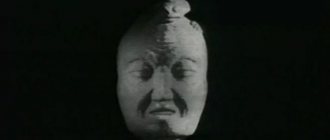Fear from a psychological point of view
Fear is an innate emotion that contributes to the preservation of the race. Some psychologists, such as A.I. Zakharov, defined this as something that is based on the individual’s instinct of self-preservation, where one of its useful properties is the protective nature of this emotion.
This feeling was defined as a state of painful experience by V. M. Leibin. William James equated it to the basic and one of the strongest instincts of an individual. Sigmund Freud divided it into 2 groups: phobia and fear. The first he considered was the process of pathological fear, that is, a constant feeling of anxiety and fear, regardless of the situation; “fear” refers to the fear of something specific.
The behaviorist approach to the psychology of fear was studied by John Watson, who identified certain stimuli that contribute to its appearance: blows and jolts at the moment of falling asleep, sharp sounds or loss of support. He called the rest only their different variations.
According to the scientist, fear can be both an innate and acquired feeling. In infancy, there is no fear of certain phenomena (fire, falling, etc.), so acquired fear is added to it. This type is formed on the basis of negative experiences that happened in the past. During the scientist’s research, it became clear that most fears in people are formed during the first year of life.
The idea of the emergence of a behaviorist approach was also developed by other scientists, such as B.F. Skinner. His idea of operant conditioning of fears showed that fears can arise, be maintained and strengthened as a result of certain events in a person’s life. Reinforcement is divided into both positive and negative.
A striking example of positive reinforcement would be a child who, as a result of escaping from this feeling, tries to find refuge in his parents. By asking for help and receiving their care, he develops a certain strategy, during which he will every time resort to the help of his parents in the event of subsequent potential danger.
In this case, it is very difficult to overcome this phenomenon, since the child receives positive emotions from his relatives and this increases some benefit from fear. If the desired care and attention can only be obtained in this way, then the child will sometimes even stimulate his fear in order to receive positive emotions.
Devices for measuring the level and strength of fear.
In the process of the development of science, scientists received various devices with the help of which it became possible to carry out psychophysiological diagnostics of a person. At the beginning of the 19th century, the French doctor S. Feret and the Russian physiologist Tarkhanov independently discovered that when fear occurs in human skin, its electrical properties change. This is how the galvanic skin response (GSR) was discovered, which is the most informative component of a polygraph (lie detector). Thanks to GSR, you can measure the level of fear.
Today, the polygraph is one of the most accurate instruments that can be used to measure the body's reaction to a stimulus, which can be either dangerous or non-dangerous.
Types of human fears
It is impossible to unambiguously determine the types and categories of human fears, since there is no generally accepted classification of them. Some scientists, such as D. B. Sadok and G. I. Callan, divide fears according to the degree of their constructiveness - those that pose a real threat and those that can be assessed as an inadequate stimulus to a certain stimulus, which can lead to psychopathology.
Fear of childbirth may appear based on stories told by someone with negative consequences (death of a child or mother), but it can only aggravate the process of giving birth to a child. The fear of being left in a burning house, in turn, stimulates reflexes, as well as other signs of fear, which help prevent such a situation, thereby adequately responding to certain stimuli.
Yu. Shcherbatykh divides fears into 3 types, which are more characteristic of a socialized modern person:
- natural fears associated with natural phenomena: volcanic eruption, earthquake, floods, etc. Fears of animals can be distinguished as a special group of natural fears, especially snakes. This subgroup is often associated with rational fears about death.
- social fears are associated with a person in society. This category displaces the basic needs of a person and puts a person’s social status in the foreground. Social fears are dictated by society and the herd instinct, and may not always be detrimental as a result. This category can often affect emotionally unstable individuals.
- existential fear generated by emotions about what is happening. The more a person thinks and worries about certain concepts, the greater the likelihood of aggravating the fear, or at least laying its root.
Feelings of fear are innate and can accompany us almost throughout our lives, but it is better to get rid of some of their types by analyzing their origin and understanding their impact on your life.
Why is fear needed?
K. Izard, in his theory of differential emotions, ranks fear among the “basic” emotions. Fear is conditioned by human nature, implanted into his genetic program. The reasons that cause certain fears can be identified as real and imaginary threats.
Fear performs a protective function for the psyche. It is closely related to the instinct of self-preservation. Often it is the fear of death that saves a person from rash, impulsive actions.
The reasons that give rise to certain fears include:
- emotions;
- cognitive processes;
- external events;
- attractions.
Creation of fear - where does it come from?
Often fear is something we imagine. This is where similar quotes arise about its essence: “Fear shows us one world, and love another world. We decide which world is real..." - words of Louise Hay. There are also sayings about fear of this kind, that is, often existential - “fear has big eyes.”
Life without this feeling is almost impossible. In order to overcome it, you need to get rid of primitive fear, its primary sources.
The breeding ground for him is the inability to control his imagination. Intentional imagery can be positive for designers, writers, or artists. But when a person begins to believe in negative images or situations so strongly that it develops into fear, one must not only consign it to oblivion, but also question the very pretext of its existence, if there are good reasons for this.
The fear of abandonment, being alone, the fear of betrayal or the fears of children (darkness, heights, etc.) originate from somewhere. Often it comes from childhood. Children are very susceptible to the influence of the external environment, since their psyche is still unstable. Childhood fears can carry over into adulthood.
It is important to be able to understand the starting point of the appearance of this phenomenon in order to stop the process in the bud. It appears gradually. It can all start with anxiety and ordinary fear and develop into phobias and neuroses. It is generated by feeding it, events from life, negativity in the environment.
Fears are generated where they are given free rein. It can be difficult to exclude the possibility of its occurrence, but when understanding its existence, it is best to begin to fight not with its symptoms, but with itself. Do not underestimate the role of your imagination - thoughts and conjectures influence feeding this feeling properly in its favor.
It is worth remembering that it can be reinforced by itself under the influence of a negative stimulus. At the moment of trying to prevent it, the person unconsciously reinforces it. Therefore, read our article on how to suppress feelings of fear.
Psychophysiology of fear.
Research by American scientists has shown that the feeling of fear is localized more in the right hemisphere of the brain. They came to these conclusions thanks to their study, during which subjects were shown films of various contents using contact lenses. Scientists have recorded that the right hemisphere is more associated with the assessment of unpleasant and terrible scenes, and the left hemisphere, on the contrary, with pleasant and funny episodes.
When a person experiences fear, a number of psychophysiological changes are triggered in his body, such as:
- Changes in heart rate and strength.
- Increased sweating.
- Gastrointestinal disorders (nausea, vomiting, diarrhea) may occur.
- A number of physiological changes occur in breathing (changes in amplitude and frequency of respiratory cycles). There may be a lack of air.
- Constriction of skin blood vessels
- Release of adrenaline into the blood from the adrenal glands
All this happens due to malfunctions in the functioning of our autonomic nervous system, which consists of two main sections: sympathetic and parasympathetic.
The sympathetic department is designed to mobilize all the body's resources in the event of danger. In response to danger, the sympathetic nervous system activates various parts of the body, so the pupil begins to dilate, ventilation increases in the bronchi, the strength and frequency of heart contractions increases, arteries narrow in the circulatory system and blood pressure rises, sweating on the skin increases, etc. The overall effect of such reactions can be called exciting.
The function of the parasympathetic department is energy-saving, under the influence of which the body functions are inhibited. Thanks to the parasympathetic department of the autonomic nervous system, the body restores wasted energy. After the reason that caused the fear disappears, our body does not immediately come to its senses. He needs some more time to restore balance within himself. During recovery, oxygen consumption decreases, the activity of the digestive system is restored, and the ability to remove metabolic products improves.
If the braking process does not start, this can lead to exhaustion of the body, in the worst case, even death.
How to understand the feeling of fear and what it is
To understand the feeling of fear, you should adequately assess the situation and how often it worries you. If there are hints that a certain situation and its harmful or negative results are scrolling through your head from time to time, or moreover, fear appears in a dream in the form of a nightmare, it means that it has crept deep. The fear of the unknown is nothing more than a figment of the imagination.
It is impossible to avoid negative thoughts, but it is important to evaluate their constructiveness. The lack of reasoned ideas why this or that situation can develop into a negative one means that you are controlled by fear.
A constant feeling of anxiety and fear is a signal that you should reconsider your life positions and begin to control your thoughts. Stopping thinking about the negative and focusing on the positive right away won't work, but it can be a good start to reducing the number of unreasonable worries that can develop into a phobia.
Understanding it is the first step towards its eradication. Accepting its presence and the fact that it interferes leads to an understanding of its nature: under what circumstances did it apply and how long has the fear been tormenting, what exactly does it prevent one from doing and is it worth it, they are afraid.
An objective assessment of the feeling of fear already suggests certain approaches to its destruction. The sooner the understanding of the meaninglessness of its existence comes, the more effective the process of eliminating it will be.
To understand it, you first need a banal acceptance of this feeling. Acceptance means that it interferes and the person wants to get rid of it. The second suggests that this is possible. What follows is a deeper study of it, both the positive aspects of its influence and the negative. If there is more harm than good, and the mind does not provide an adequate explanation of why it is scary and whether it really is so, then the process of eradicating it has already begun.
It is much easier to get rid of it by understanding its nature, type and type of origin. The constant feeling of anxiety and fear will gradually fade into the background after the questions: “why is this bothering me so much?”, “Is it really that scary?” etc. The main thing is to understand that you don’t need to build your plans around this feeling.
Every person is capable of overcoming fear.
Fear makes us anxious and apprehensive. We become more cautious, picky, suspicious, and this often interferes with enjoying life itself. You have to be constantly on your guard. The phobia becomes our internal burden, which we have to carry with us every day.
Perhaps we should try to get rid of it?
When you decide to fight your fear or phobia, remember!
- Every person has hidden forces within him to fight.
- The causes of fear lie within you, for example, some traumatic situation from childhood.
- Fear causes you to become addicted, and almost any addiction can be overcome.
Remember, you are not alone. If you want to live a calm life and get rid of the fear that interferes with your normal life. The time has come, you have already passed 50% of the way and you have very little left.
Fear of physical and mental pain
Since fears are divided into subtypes, this means that their nature and methods of destruction differ. Fear of physical pain is not characteristic from birth; it is innate, as it is directly related to the central nervous system. The pain that our body feels is one of the incentives for self-preservation. An individual who does not feel pain is less susceptible to the fear of its existence, which means that his instinct of self-preservation is less pronounced.
Fear of mental pain can only appear as a result of a negative experience. People's fears and fears are often just a figment of their imagination. A sad story conveyed through literature or spoken word is nothing more than someone's bad experience. Such experience does not always mean absolute defeat in certain situations (due to the risk of investing finances in some business or in a love story).
In most cases, this means that the person was either not competent enough in his actions or did not fully understand certain risks.
Scary stories about evil wolves that are told to children from childhood carry not only a negative semantic load: they are afraid of wolves and should not go into the forest, but they also teach them to be careful. But often this can simply cause natural fear, which in turn develops into panic.
Mental fears are more dangerous than physical ones, as they are formed under emotionally oversaturated impressions, often even those of others. They are classified as acquired existential fears.
As they progress, they often suppress the psyche and negatively affect the individual’s body. The mobility of human reaction processes only worsens, which can lead to neuroses.
“Mental pain” is a process when depression, depression and melancholy begin to dominate a person’s life. Their severity is equated to physical pain, so mental pain sometimes torments much more than physical pain.
The fear of experiencing such feelings reinforces their very essence.
What is fear?
First, let's define fear.
Fear is an internal state of a person caused by a threatening real or imagined event with a negative connotation. From a psychological point of view, fear is a negative emotional process.
In the animal world, fear is an emotion based on past negative experiences that plays a big role in preserving the life of an animal.
From a physiological point of view, the root of fear lies in purely electrochemical processes that occur in the brain
From a scientific point of view, fear is a consequence of the activity of the hypothalamus and adjacent parts of the brain. This is an area of the so-called ancient brain. And in this we are not much different from animals.
But fear can be either a consequence of events or chemical processes, or in human nature it can also be a consequence of imagination and speculation.
How to overcome panic fear
The meaning of the word panic from Greek is “sudden”, “senseless”. Hence - panic fear - something like a phobia, which was initially in the form of fear, but then grew into a strongly reinforced feeling of fear.
If natural - mobilizes a person’s abilities, during which it becomes easier to avoid some unpleasant or harmful processes, then panic, in turn, suppresses the state of the psyche. A decrease in capacity can be caused due to a discrepancy between the conditions of reaction to a particular situation. As a rule, sensitive individuals are subject to panic fear.
Scary stories give rise to fear of heights, childbirth, death, etc. I work in fear rooms in such a way that the unknown is often frightening. Anything can happen in the unknown, and especially impressionable people can even get a heart break (one of the extreme cases).
In this regard, neuroses may arise, which lead to a series of somatic symptoms, such as suffocation, rush of blood to the head, chest pain, until loss of consciousness. Sleep disturbances and persistent nightmares and insomnia may begin.
Sudden panic fear complicates life and can appear completely unexpectedly.
If the process is started and it turns into panic, then the root of the problem should be sought immediately. But, if a person cannot overcome it on his own, which can be extremely difficult, then he should contact a specialist.
Neurotic symptoms are treated with both psychotropic drugs and psychotherapy.
The first method comes down to taking benzodiazepines, which are the most effective. The process of using them should be short-lived, as this can lead to addiction and complications.
The second method is based on psychotherapist sessions and long-term psychoanalysis, which can help both the patient and the doctor deal with the problem. Sometimes both methods go hand in hand to solve a problem faster.
This means that if panic takes hold of you from time to time, then you should immediately solve this problem, as this can lead to a number of somatic symptoms that not only reduce capacity, but also suppress a person’s mental health.
Signs of fear
Fear affects both a person’s physical condition and his behavior and well-being. Its manifestations can vary depending on the degree of potential threat from minor anxiety to panic.
State and feeling of fear
Fear is accompanied by the production of a number of hormones - adrenaline, norepinephrine and cortisol. They allow you to prepare for a response to a threat by changing the functioning of the heart, lungs and systemic metabolism.
The release of hormones puts the body in a state of heightened alert: blood supply to the muscles increases, blood glucose levels rise, and the brain concentrates only on potential danger. All this is accompanied by a number of somatic manifestations:
- Increased heart rate and breathing.
- Increased sweating.
- Dry mouth.
- Pupil dilation.
- Tunnel vision: a condition in which a person perceives visual information only about what they see directly in front of them. Peripheral vision is “turned off”.
- Inability to switch attention and thoughts to anything other than the source of fear.
- Dizziness and loss of appetite.
- General tension and increased muscle tone.
- Increased reaction speed and decreased pain sensitivity.
The mental reaction to fear varies from person to person and depends on the strength of the emotion. Often people feel only physical changes and anxiety, trying to avoid danger through their actions. With a sharp, sudden impact, a state of numbness and the inability to do anything is possible.
A short-term feeling of fear is harmless. However, with a long stay in this state, negative consequences are formed, such as:
- Sleep disturbance, insomnia.
- Decreased libido.
- Excessive irritability, aggressiveness.
- Frequent headaches.
- Decreased performance and loss of planning skills.
Why do people strive to experience fear?
The emotional response to fear is very individual and is often experienced differently by people.
Fear can also cause positive reactions in the human central nervous system. In some situations, the feeling of fear is regarded as entertainment, for example, while watching horror films. There are also people who provoke a feeling of fear in themselves - the so-called adrenaline junkies. Most often, these are people who are interested in extreme sports and other activities associated with risks to health and life.
Panic fear
Sometimes fear goes beyond the boundaries of a physiological reaction and becomes excessively strong, and a person goes into a state of panic, losing control over himself and the situation. If the reason for the appearance of such strong fear cannot be established, we are talking about a panic attack.
A panic attack is accompanied by extremely unpleasant sensations. Photo by Alex Green: Pexels
Panic attacks are often preceded by physical and emotional overload, and less often by sudden changes in hormonal levels. They are most often associated with the following factors:
- Chronic stress.
- Severe emotional shock.
- Long periods of sleep deprivation.
- Excessive physical activity.
- Severe somatic diseases, for example cancer.
- Pregnancy.
Panic attacks can also be a symptom of mental disorders, including: depression, psychopathy, hypochondria, schizophrenia, obsessive-compulsive disorder.
With panic fear, unlike its other types, symptoms may occur that resemble somatic diseases. Quite often this emotion is accompanied by:
- Feeling of chest pain.
- Shortness of breath, difficulty breathing.
- Feeling of numbness in the limbs.
- Fuzzy, clouded consciousness.
- Loss of consciousness.
Panic attacks last from several minutes to 1-2 hours, on average - about 30 minutes. They are also characterized by frequency, which can vary from 1-2 attacks per month to several per day.
Fear of pain
Algophobia or fear of physical pain is one of the common fears, which is often associated with previously experienced severe pain. In everyday life, it manifests itself when visiting medical institutions and dental offices.
Algophobia is common in children. Photo: FanMU/Depositphotos
Normally, a person tries to avoid harm to his health, which is often accompanied by pain. With algophobia, even the potential opportunity to feel pain causes strong fear with all its manifestations. An example is the fear of donating blood for laboratory tests due to the pain that is accompanied by puncture of the skin with a scarifier or syringe needle.
Fear of Rejection
Another fairly common fear is the fear of being rejected by society or a specific person. As a rule, it is formed against the background of a previous experience of a painful break with a person or rejection, for example, in a family. There is also a hypothesis that it is associated with autism spectrum disorders (autism, Asperger's syndrome) and attention deficit hyperactivity disorder (ADHD).
Negative experiences in the past can cause fear of being rejected by people. Photo by RODNAE Productions: Pexels
The fear of rejection is especially sensitive to interactions with other people:
- Constantly expecting the relationship to deteriorate and preparing for it.
- A persistent feeling of disrespect, ridicule and criticism addressed to you.
- An overly strong reaction to breaking up a relationship with someone. In this case, the response can be either severe aggression or depression.
Fear of getting coronavirus
The fear of infection with COVID-19 has become relevant today.
There is an opinion that it is based on the so-called “behavioral immune system,” which is behavioral characteristics aimed at minimizing the risk of getting a dangerous disease. The behavioral immune system evolved during a time when humans did not yet have such effective drugs to fight infections. This fear is fueled by constant news in the media about the number of new cases and deaths from this disease, the general mood in society and the understanding that effective drugs against the SARS-CoV-2 coronavirus have not yet been found.
Treatment of fears
To treat fear, a specialist diagnosis should be performed. From the above, we can conclude that it is divided into congenital and acquired. If the problem is not natural, but social or existential fear, then it can be eliminated using several methods.
Ways to eliminate it:
- Psychotropic drugs
- Psychotherapy (specialist help)
- Breathing techniques
- Imagination control
- Meditation and other practices
- Face your fear
The first method is most often used for neuroses, the affect of fear (with strong excitement and loss of self-control). Such cases are extreme, so treatment should be immediate.
Psychotherapy is used for the ability to understand and recognize one’s fears, the concept of their original source and eradicate them in the future.
It is important to maintain deep breathing to calm yourself down. It is rapid breathing that precedes fear, so bringing it into the right direction will help you calm down.
“7/11 Technique” is called that because of the score. Its essence is this: take a deep breath, counting to seven, and exhale deeply, counting to 11. It is not necessary to use these exact numbers, the main goal is to increase the time for exhalation, in comparison with inhalation.
The first thing that gives rise to fears is the limitless possibilities of our imagination. On the one hand, its immense possibilities can benefit people of certain professions, but on the other hand, their reinforcement comes precisely from these same opportunities.
Controlling the imagination is the path to exploring oneself and understanding whether what it seems is as scary as it seems. Of course, it is impossible to completely control your thoughts, but you can limit their negative flow by surrounding yourself with positive information and limiting access to negative information.
Meditation is a more extensive practice than controlling the imagination and is one of the auxiliary techniques for achieving this goal.
The Austrian psychologist and psychiatrist Viktor Frankl proposed a direct meeting with them as a treatment. Fear of closed spaces means you need to be there more often, arachnophobia means holding a spider and repeating the procedure several times. Of course, all this should happen gradually and under the supervision of a specialist with his recommendations, but this should already give positive results the second and third time.
Causes of fear
Fear is a natural response to a feeling of danger; it helps to avoid getting into situations that threaten health and life.
Depending on the type of fear, these may be external circumstances or internal experiences. Most often, this emotion is caused precisely by the features of the environment - closed space, height, darkness. Less often, fear is caused by a person’s feelings about social interaction with parents, loved ones or business partners.
The limbic system of the central nervous system, mainly the left amygdala, is responsible for the development of fear. The process is implemented through two neural pathways: short and long. The first is responsible for a quick reaction to potential danger, the second controls the adequacy of the response to the trigger and supports or blocks the shortcut. When the long path is disrupted, phobias arise. A number of hormones are also involved in the formation of feelings of fear, including cortisol, the “stress hormone.”
The most common types of fears and phobias are:
- Thanatophobia is the fear of one's own death.
- Stage fright is the fear of speaking in front of a large audience.
- Cynophobia is the fear of dogs.
- Acrophobia - fear of heights.
- Nyctophobia is the fear of the dark.
- Claustrophobia is the fear of enclosed spaces.
- Agoraphobia is the fear of being in places that cannot be quickly or easily left.
- Arachnophobia is the fear of spiders.
- Aviation phobia is the fear of air travel.
- Astralophobia - fear of thunderstorms.
How can I get rid of it once and for all?
Looking fear in the eye is what you need to do to begin the process of eradicating it. To avoid its aggravation, it is worth thinking about their origin and influence on your life.
Fear has big eyes - something that is always worth remembering. It is not he who rules you, but your imagination. The more you think about it, the more it affects your life, and at the same time you feed it.
Scary stories are partly interesting, but they frighten those who are especially impressionable. Psychology will tell you how to deal with it.
The study of neurochemistry and physiology shows that it has much more negative effects on the human body, since social and cultural attitudes towards humans have increased, which has contributed to the generation of new fears. They began not only to dull some reactions, but also to make a person unsure of himself, nervous, etc.
Natural fear prevailed among our ancestors, therefore, when they saw it, the work of the muscular system predominated: they either fought the enemy or fled.
Nowadays, human fear is of a nature that is less pronounced in animals; this includes fears such as: losing loved ones, loneliness, losing social status, which suggest that the primary needs of a person are not only the ability to sleep, eat and breathe. The range of human needs has increased, and with it the number of related problems.
Since this feeling is one of the basic emotions, its harm should be noted if there are groundless reasons for concern.
Try to comprehend its harm and panic (senseless) nature, if any. Accepting this will prompt treatment measures. If there is no way to fight it except medically and the body is not able to overcome it on its own, you should resort to the help of a psychotherapist and psychotropic drugs. The second will help to dull this feeling at least for a while.
Don’t be afraid to ask for help, because he drives you into certain limits and does not give you the opportunity to live in peace. Its effect on the body is much stronger than it seems.
State of fear
Negative emotion is a normal individual response to the vicissitudes of life. In an implicit, expressed form, this state acts as an adaptive reaction. For example, an applicant cannot successfully pass an exam without experiencing excitement and any anxiety. But in extreme terms, the state of fear deprives the individual of the ability to fight, giving a feeling of horror and panic. Excessive excitement and anxiety do not allow the applicant to concentrate during the exam, he may lose his voice. Researchers often note a state of anxiety and fear in patients during an extreme situation.
The state of fear can be relieved for a short time by sedatives and benzodiazepines. A negative emotion includes a state of irritability, horror, absorption in certain thoughts, and is also marked by changes in physiological parameters: the appearance of shortness of breath, excessive sweating, insomnia, chills. These manifestations intensify over time and thereby complicate the patient’s normal life. Often this condition becomes chronic and manifests itself in the absence of a specific external reason.
How to overcome feelings of fear
Fear itself is an unpleasant feeling that takes away excess energy. To understand how to deal with it, you need to determine its original source.
If the nature of fear is sudden in a certain situation, and does not accompany you constantly (fear of heights or darkness, fear during childbirth), then there are certain ways to eliminate or neutralize it for a while.
Psychologists often recommend getting rid of the negativity around you by limiting the following information:
- Unsubscribe from negative mailings, channels and groups (on social networks, etc.)
- Limit your ability to communicate with people who fuel it (if there are any).
- Try to eradicate bad thoughts in the bud. As soon as they are born, drive them away.
- Try to read more positive information.
- Keep conversations about good things with your interlocutors.
- Surround yourself only with good emotions, pleasant words, and kind deeds.
Observe fear to understand what it does to your body at that fateful moment. Consider its negative impact on your body and accept the fact that it is bothering you.
Try to act as if you are not afraid. Feel this for yourself and think about which position you look more advantageous in: the first or the second. Try to convince yourself that there is no reason for fear, it was once invented by your imagination. Tune in to positive emotions and believe that the steps listed above will help you in the fight against it.
Remember what fears you were able to overcome earlier in order to feel the positive emotions that you experienced. Realize their significance in your life, because every step to fight it is an approach to a small victory
Fighting it by directly interacting with it will be much more successful than trying to escape from your thoughts. The more we run from ourselves, the more phobias can overtake us.
The illusion of fear
A fact that at first may seem seditious to most against the backdrop of general unrest is how such fear does not exist . Everything depends only on our perception.
During a crisis, our sensors work at full capacity to process kilotons of different information. All “digitized” material begins to influence our internal state, which becomes increasingly difficult for us to understand. For example, we feel anxiety within ourselves, but our mind cannot understand the reason for its occurrence, cannot figure out what to do with it. At this moment, we begin to experience fear of uncertainty, of what we cannot recognize and realize in ourselves.
Fear is a distorted perception of not only reality, but also the internal state; it is a kind of illusion.
Why you shouldn't be afraid when you're scared
The concept of fear and its essence is innate for us and grows with us, but the types of this feeling that affect a person’s life often differ depending on the methods of their acquisition.
It is most difficult for more sentimental individuals, since the role of influence on them increases due to the peculiarities of their psyche. Perceiving everything at least at the level of feelings, they are less aware of the objective influence of fear on their lives.
It can be divided into several types, depending on the approach to studying them:
- According to the degree of their constructiveness - those that pose a real or imagined threat.
- Natural, social and existential. The first type was inherent in our ancestors - fear, which is directly related to natural processes in the external environment that can adversely affect a person (earthquake, poisonous animals, etc.). Social is associated with the fear of losing a certain social status in someone’s eyes. The mechanism of existential fears behind Franklin is simple: what a person fears, the person begins to be afraid and it begins to torment him.
In the fight against them, you can resort to various methods, but the main thing is to look your fear in the face. The more you accept it and consider its negative effects, the more likely you are to eradicate it.
If understanding fear is possible without receiving outside help, you should use this opportunity. Otherwise, there is the help of a psychotherapist , psychotropic drugs , breathing techniques , control of the imagination , meditation and other practices.
The ability to overcome your fear is based on the ability to directly pretend that there is no reason for concern.
You should also resort to surrounding yourself with all kinds of positive information and exclude receiving negative information through the media, your relatives, friends, etc.
Constant feelings of anxiety and fear can be overcome. If you are not afraid to admit its presence and adequately assess its harm. A long-term analysis of your fears will help you look at them from a different angle, then there will be many more opportunities to get rid of them.
Don't be afraid to face your fears, and you will feel much better after getting rid of what has been controlling you for a long time.
What lies behind fear. Level 1
I suggest you look even deeper.
Believe me, I have extensive experience in counseling on past lives and working with fears. So, the worst thing for a person is not death, but what he does not have time to do because he died (was killed). It is because of this that the soul suffers and experiences the most. This is what torments her after the death of her body. And most of all she is afraid of not having time again, of not doing it again. The soul experiences and creates a “reminder” for a person, somehow connected with what happened in a previous life.
Examples:
1. In a past life, a person was slandered, imprisoned, accused of treason and executed by cutting off his head. But in fact, he was devoted to the king and never betrayed him.
The soul creates a “reminder” in the form of phantom pain in the neck, appearing in certain cases, so that you remember how important it is to be honest, and, if you are a man, then you know how to prove your honesty and go to the end in establishing justice, and do not fall spirit and did not reproach himself, feeling sorry and complaining about life, resigning himself to the accusations.
Instead, a person is afraid all his life that he will be accused of something, so he does everything to please others: he oversteps himself, lies, gets his way by blaming others, etc. Those. does not solve the problem created in a past life, but on the contrary, driven by fear, complicates it more and more.
2. Middle Ages. A boy's hand is cut off for stealing a piece of bread at the market. He subsequently dies from feeling deprived and crippled. The soul creates a “reminder” so that you never take someone else’s things again, but learn to work with your hands and create living things.
Instead, in real life, a person is afraid to do something with his hands, avoids any handicraft, and the further he goes, the more difficult it is for him to do something. So it turns out that, driven by fear, he also moves further and further away from himself and the solution to his problem.
3. A woman is burned at the stake, accused of witchcraft, because she was bright and beautiful, felt nature, knew how to find a common language with it, loved animals and the forest. Having died, she was unable to fully demonstrate her witchcraft magical power. In real life, it is important for this woman to accept inner strength and magical gifts in order to develop them for her own benefit and to help other people.
Instead, she, driven by fear, is afraid of any manifestations of her power: beauty, clairvoyance, feeling, the ability to hear animals and plants. He becomes an accountant and works in an office all his life, bringing himself to the point of neurasthenia and the state of a gray moth.
Conclusion:
There are a great many such examples. The essence is the same. It is important to understand what a person wanted to do and did not have time, could not. Remembering this, do the same in your current life. Complete - complete a task in order to move to the next stage of development and discovery of talents and abilities.
But, instead of remembering and completing the task, the fear mechanism usually turns on in a person. And instead of a solution, he receives another fear, and subsequently a tangle of fears and apprehensions that take him further and further away from himself and from solving problems for this life.
Summarizing
When you understand the essence of fear, you come to the realization that it is very dangerous to be in such a state. If you are constantly afraid, or you have constant phobias, then you urgently need to stop your suffering. Why are some people afraid and others not?
Because they have a different degree of perception. To overcome your short-term or permanent fears, you need to undergo a course of psychotherapy. But first you need to consult with a psychologist and conduct a basic diagnosis.
You need to look fear in the eyes and overcome this feeling within yourself. For this to happen, all it takes is a little desire and readiness for self-development.
Panic
Panic fear is a sudden and very strong feeling of fear that suppresses logical thinking. Psychologists believe that panic disorder is a specific vulnerability of people who interpret normal events or sensations as disasters. Most often occurs in situations of chronic stress. How to cope with a panic attack, read the article “5 proven methods”
If you live with chronic or unexplained anxiety, or if you have sudden attacks of fear, schedule a consultation to restore your lost sense of security and achieve a state of calm.
What lies behind fear. Level 2
The most interesting thing is that a person is always sure that he is afraid, he is scared . In fact, fear is not a feeling or an emotion.
Fear is a program - an inorganic essence absolutely alien to man, imposed from the outside, and not even of earthly origin. This is an energy parasite that inhabits a person and scares him in order to get enough and at least somehow dull the eternal hunger and fear that eats him away from the inside.
On topic: Parasites of the soul. The dark side of man
Fears are the best manipulators. They always and clearly force a person to do what they need. And the person, driven by fear, fulfills all his orders and wishes.
Examples:
If you are afraid of heights, you will never climb a high mountain or stand on a 10th floor balcony.
If you are afraid of water and depth, you will splash in shallow water, sunbathe without going near the water, or prefer shallow pools.
If you are afraid of the dark, you will sleep with the lights on and walk only on well-lit streets.
If you are afraid of women, you won’t let more than one into your heart. If you are afraid of men, you will blame them for everything.
And so on, I think the chain and reason for many actions is already clear and understandable. Fears are great at manipulating people.
Only an ordinary person does not understand this, he is afraid and, driven by fear, builds prohibitions, restrictions, “bars and fences” around himself and his life in order to somehow protect himself. These are beliefs and explanations that a person comes up with for himself in order not to do this or that. But instead of a feeling of safety and security, he receives even more fears and fears.
Yes, any fear, when you feed it, quickly multiplies and turns into a tangle of fears, scares and apprehensions. The more a person obeys fear and follows all its orders, the stronger, more powerful and larger Fear itself becomes.
Fear is a quality that belongs to an inorganic alien entity that has deceived a part of a person’s soul. Its task is to devour the entire soul, break the spirit and completely enslave a person.
Attention. Like any other energy parasite, fear passes from life to life and is passed down through generations.











